Alaska, the 49th state, is impressive with its natural beauty and abundant wildlife. The state borders Canada to the east, the Bering Sea to the west, the Arctic Sea to the North, and the Pacific Ocean to the south. It is a popular tourist destination in the summer when the days are long and the nights are short. It’s easy to see why the state known as the “Last Frontier” holds a special magic. Visitors can enjoy the rustic beauty whether they come to hike the backcountry or cruise the passageways to watch whales and other sea life. The Alaska experience is an experience of a lifetime.
Alaska is known for being one of the most diverse states, with snow-covered mountain peaks, pristine alpine lakes, and flowing rivers. The isolated state boasts a rich culture from the many native Alaskan indigenous groups who have lived on the land long before the gold rush and canneries brought in prospectors from the lower 48. If you are planning a visit to see Alaska, then you should know about the things Alaska is known for so you can enjoy the state and everything it has to offer.
In researching this list, 24/7 Tempo consulted websites like Travel Alaska, National Park Service, Road Travel America, and Alaska Magazine. (For more fun facts about Alaska, read Meet the 10 Biggest Musicians from Alaska.)
Kenai Fjords National Park
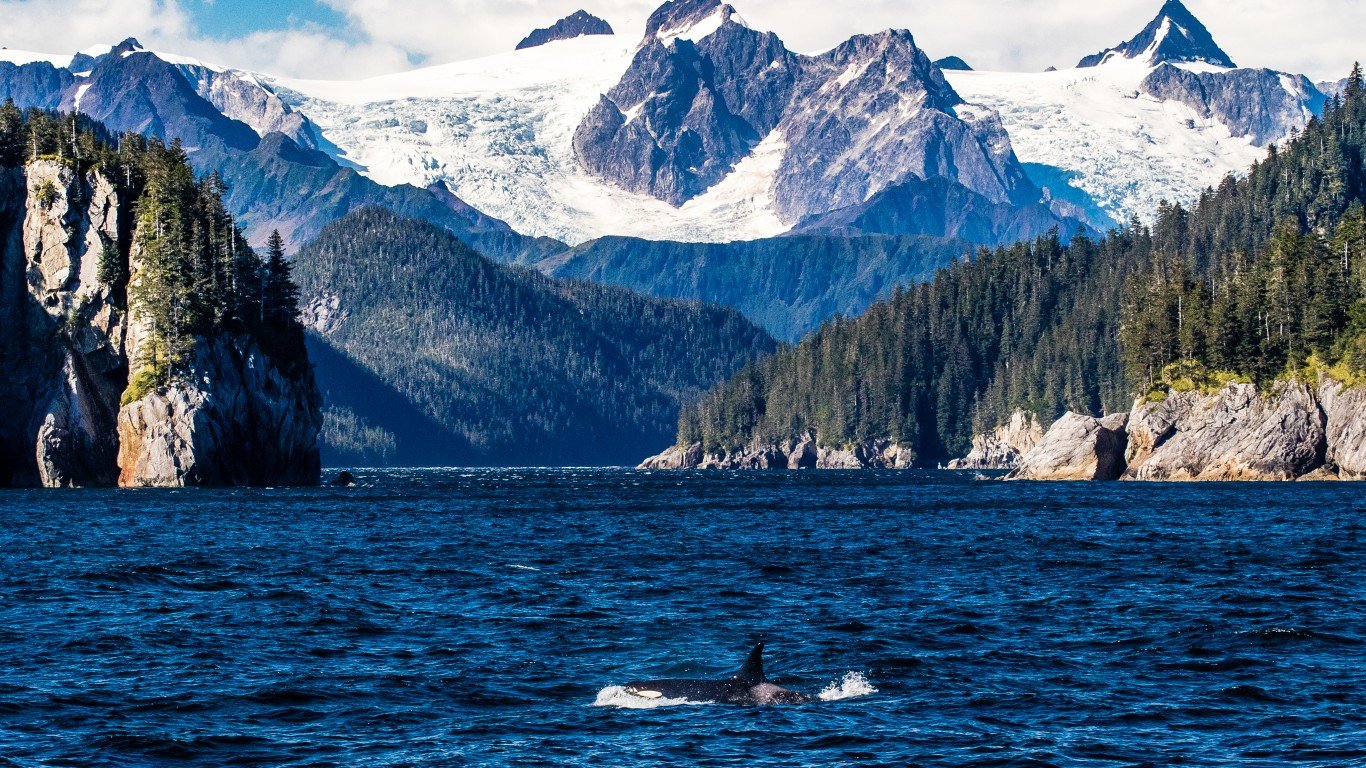
Kenai Fjords National Park is South of Anchorage on the southeastern side of the Kenai Peninsula. The park is home to the Harding Ice Field, which is made up of glaciers, fjords, and islands. The park is an impressive site, and visitors can take day trips by boat or sea kayak to explore the icy waters where the mountains meet the sea. The waters are home to sea otters, puffins, ptarmigans, birds, and other wildlife. In the summer, the whales migrate north, making the area their seasonal home.
The park is significant for the cultural history of the peninsula, and archeologists have found artifacts that have proven the area was inhabited for thousands of years. The museum has an impressive collection of artifacts and is an integral part of history. Scientists and researchers are constantly learning and sharing their findings.
Today, visitors can explore the Kenai Fjords National Park, but in 1989, the park was affected by the Exxon Valdez oil spill, and the cleanup was challenging and took several years to restore.
Northern Lights
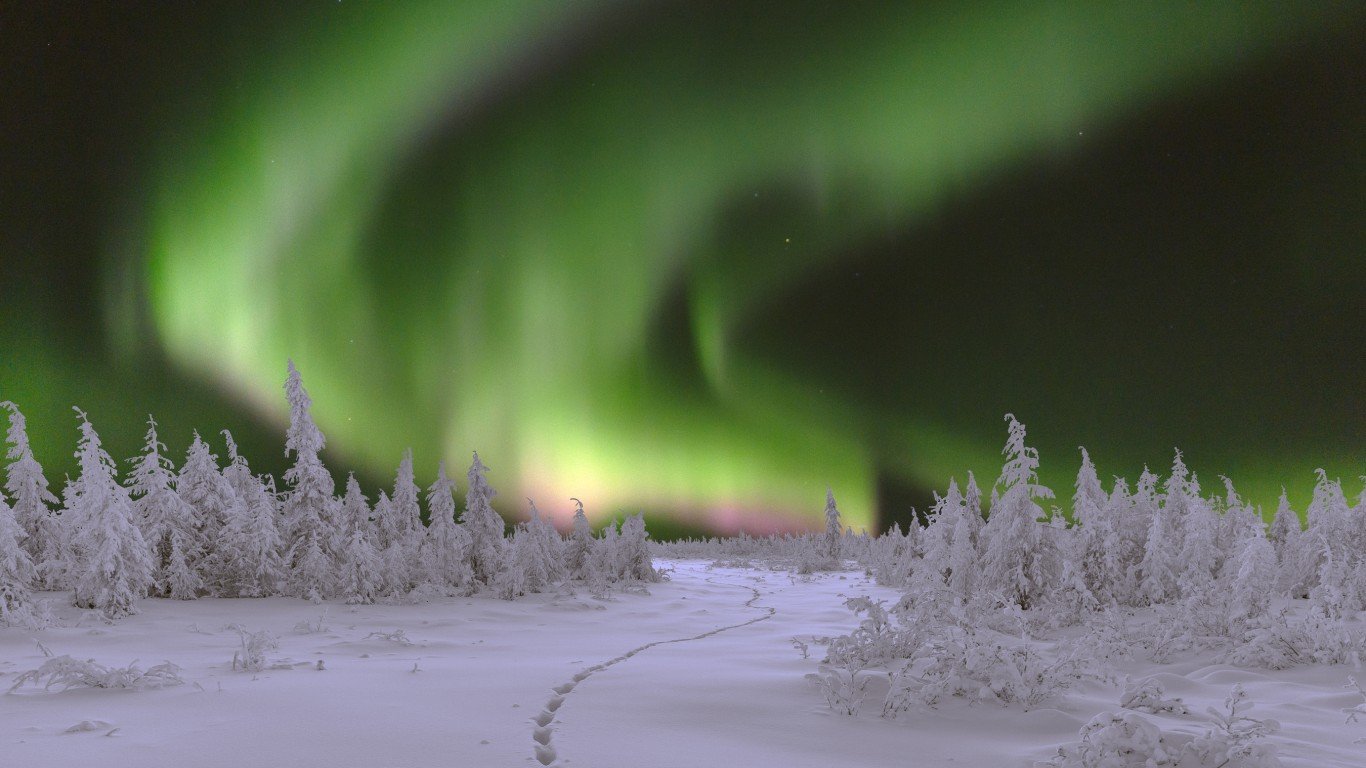
The Aurora Borealis, or the Northern Lights, light up the sky in Alaska from August to April. The colorful swirls of lights are a natural phenomenon that is caused by charged solar particles from the Earth’s magnetic field that mix with the gases of Earth’s atmosphere, producing these swirls of color that appear to dance across the sky.
While the Aurora Borealis season runs nine months, the best chances of seeing this natural light display are in the heart of the winter when the days are short, and the sky is a dark canvas. Several tour operations guide visitors to places to experience the Northern Lights, but a guided tour isn’t necessary. You can still see these colorful ribbons across the sky throughout the state.
Iditarod

The annual dog sled race, the Iditarod, takes place every March. The race starts on the first Saturday of March in Anchorage and ends in the town of Nome, Alaska. The first Iditarod race was in 1973. The race can last anywhere from eight to fifteen days. Professional mushers are allowed a dog team of twelve to fourteen trained sled dogs, and there are pitstops and veterinarian checks along the way to ensure the dogs’ safety.
The sled dogs are trained for months before the event to prepare them for the challenging race. However, the race has been called out in recent years by PETA and other animal rights activists for animal cruelty, causing big-name sponsors and supporters to stop sponsoring the event.
Several tour companies offer short sled dog rides to experience mushing. Some kennels are open to the public to visit the dogs and learn about the history of sled dogs and how they have been transporting Alaskans in remote parts of the state for years.
The Trans-Alaska Pipeline
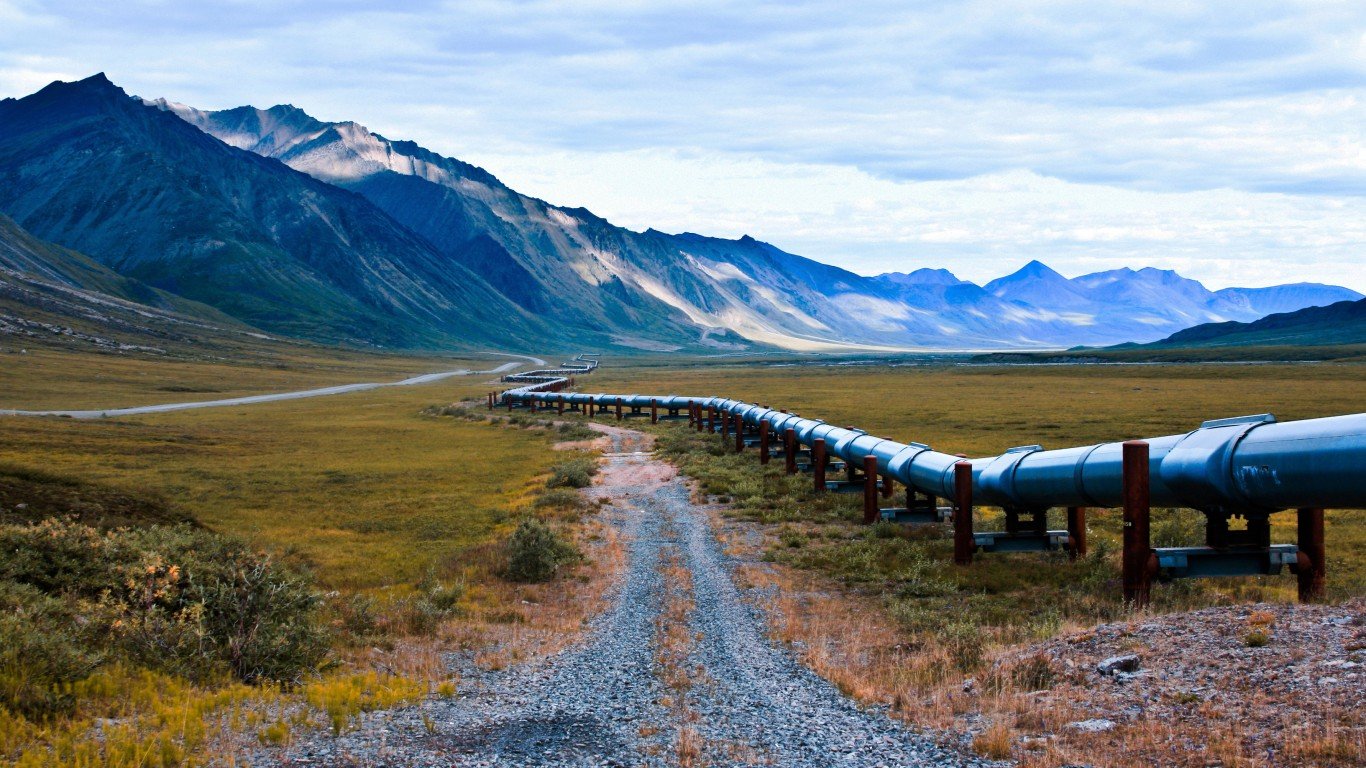
The Trans-Alaska Pipeline runs from the north to the south of Alaska. The 800-mile-long pipe between Prudhoe Bay in the North and Valdez in the South is a unique feature of Alaska. The pipeline pumps crude oil, one of Alaska’s natural resources, and was opened in 1977.
The pipeline was controversial because of its impact on the environment as well as the local economy. In 1982, permanent residents of Alaska began receiving annual dividend checks for their share of the pipeline. Check amounts vary each year. The 2023 dividend is $1,312. Visitors can spot the pipeline on the highway outside of Fairbanks and snap a picture of the historic engineering feat.
Mt. Denali (formerly Mt. McKinley)
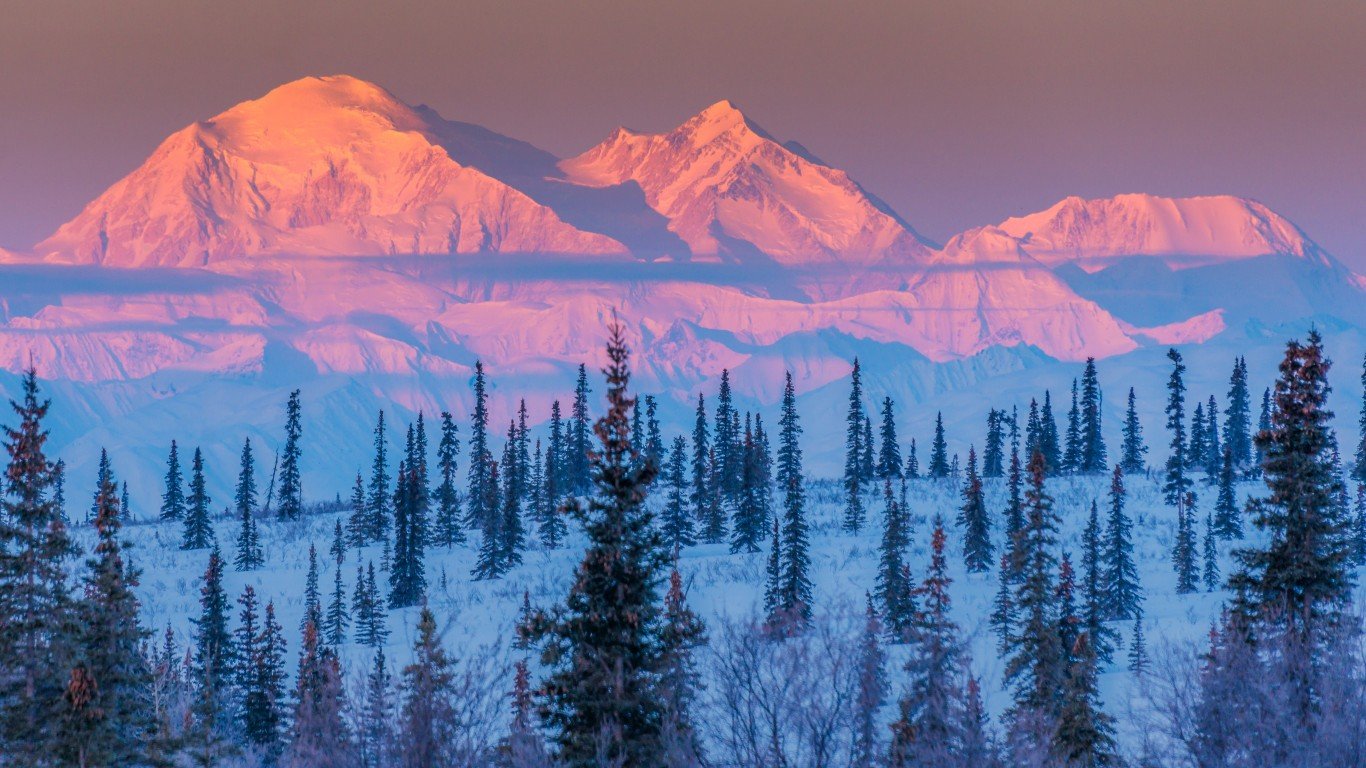
Denali National Park and Reserve is home to the highest mountain peak in North America, Mt. Denali. The mountain, for a time, was called Mt.McKinley but has now reverted to its original indigenous name of Mt. Denali. The snow-covered peak is 20,310 feet. The first time mountain climbers reached the peak was in 1913. Every year since, climbers have attempted to summit. Since 1936, there have been 129 deaths as climbers tried and failed to summit.
Visitors who prefer to look at the mountain rather than climb it can spend time in Denali National Park and Reserve. The park offers backcountry trips with a permit, and a tourist bus system takes guests into the park to watch wildlife and admire the breathtaking views.
Fairbanks
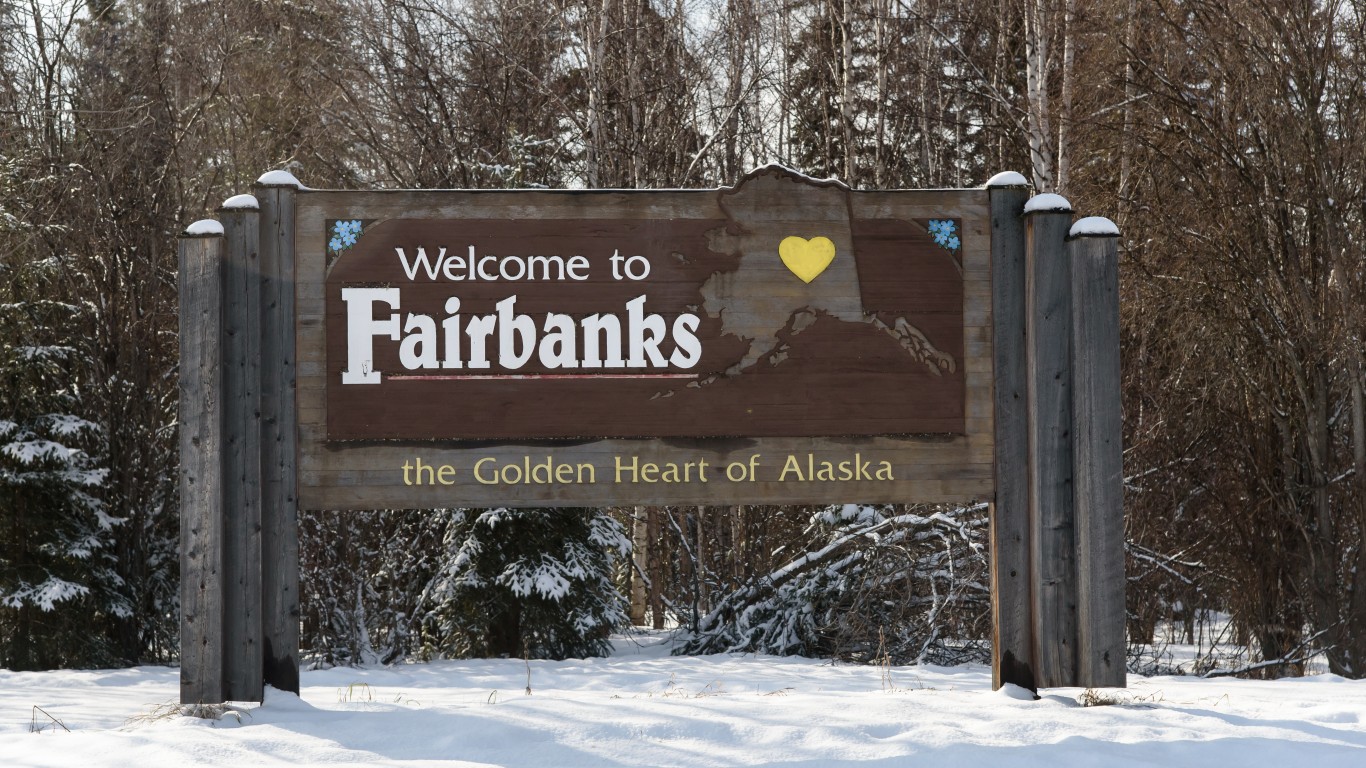
Fairbanks, Alaska, in the north, is the second largest city in the state. Located at 65 degrees north latitude, right along the Chena River, the city gets almost twenty-four hours of sun from April to August, giving it the name the Land of the Midnight Sun. Visitors can explore the city year-round, but the best time is in the summer when the city has many festivals and art exhibits that show the cultural identity and historic spirit of the city and its inhabitants.
Fairbanks is known for the mid-July Golden Days festival celebrations and the gold rush. The Summer Solstice Festival kicks off the summer season with a street fair and entertainment. The oldest state fair in Alaska, the Tanana Valley State Fair, happens in August. In February, visitors can check out the World Ice Art Championships and the Yukon Quest International Sled Dog Race. Year-round, there are museums, antique shops, the University of Alaska Fairbanks, and other places to explore. Fairbanks is a great jumping-off point to explore the Arctic Circle and the northern interior of the state.
Alaska SeaLife Center
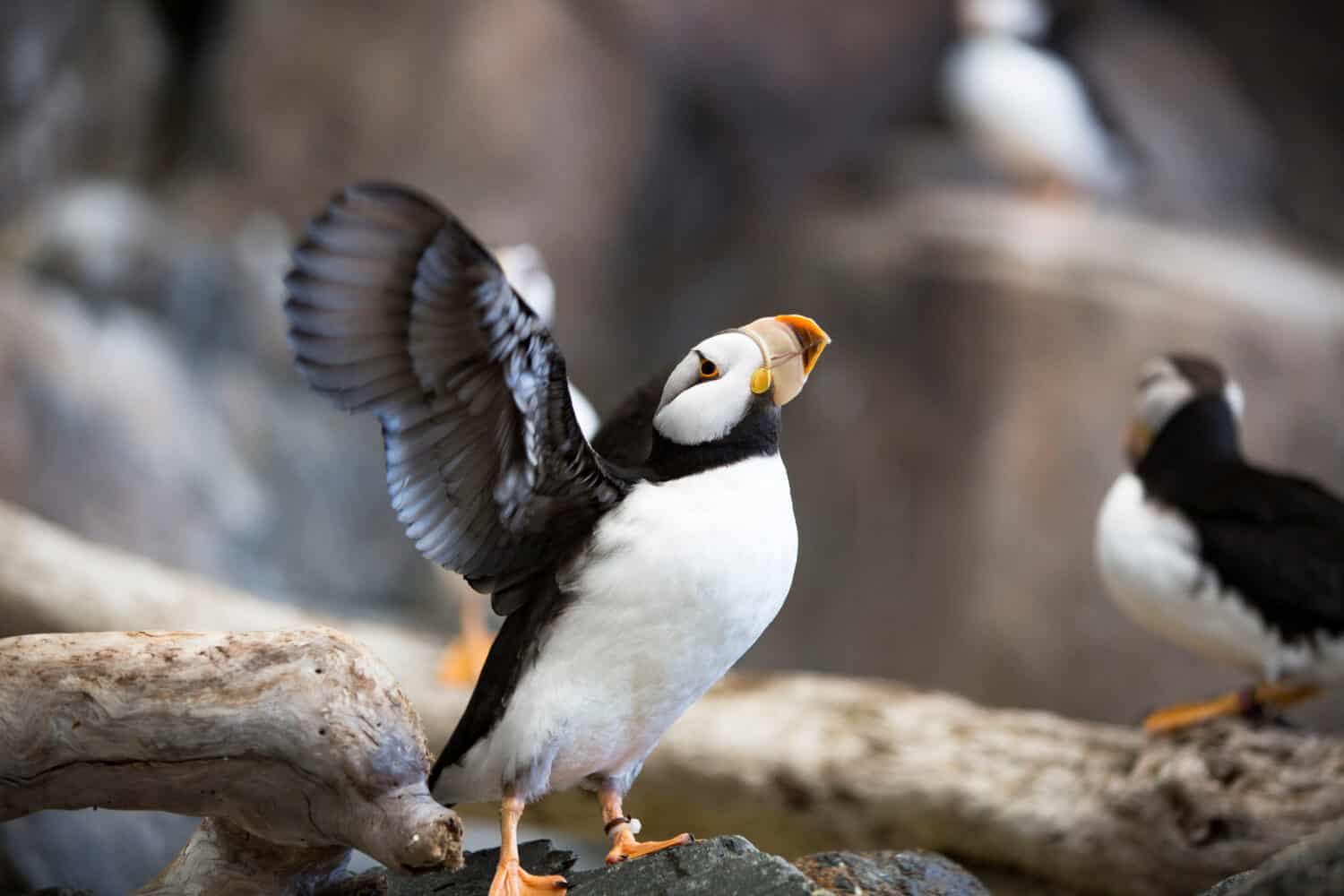
The Alaska SeaLife Center, located in the southern city of Seward, is the only public aquarium in Alaska dedicated to education, marine research, and wildlife response facilities. Visitors can see sea lions, otters, seals, birds, fish, octopuses, crabs, urchins, eels, and more. The center first opened its doors in 1998. A visit to the center is a fascinating look at marine life and should be a must-see on any trip to Alaska.
The Alaska SeaLife Center is a private non-profit corporation working to preserve natural marine life and habitat. It is an accredited member of the Association of Zoos and Aquariums and the Alliance of Marine Mammal Parks and Aquariums. For the best experience, buy tickets early.
Glaciers

Alaska is home to over 100,000 glaciers. According to the National Park Service, one-fourth of Alaska’s glaciers are within national parks. A whopping 23,000 miles of Alaska are covered in glaciers, and you can visit many of them. Some of the most popular glaciers to visit are Matanuska Glacier, Mendenhall Glacier, Exit Glacier, Childs Glacier, and Glacier Bay National Park. Visitors can hike to some of these glaciers; others must be explored by boat or kayak, and some of the glaciers you visit on a helicopter tour.
Arctic National Wildlife Refuge
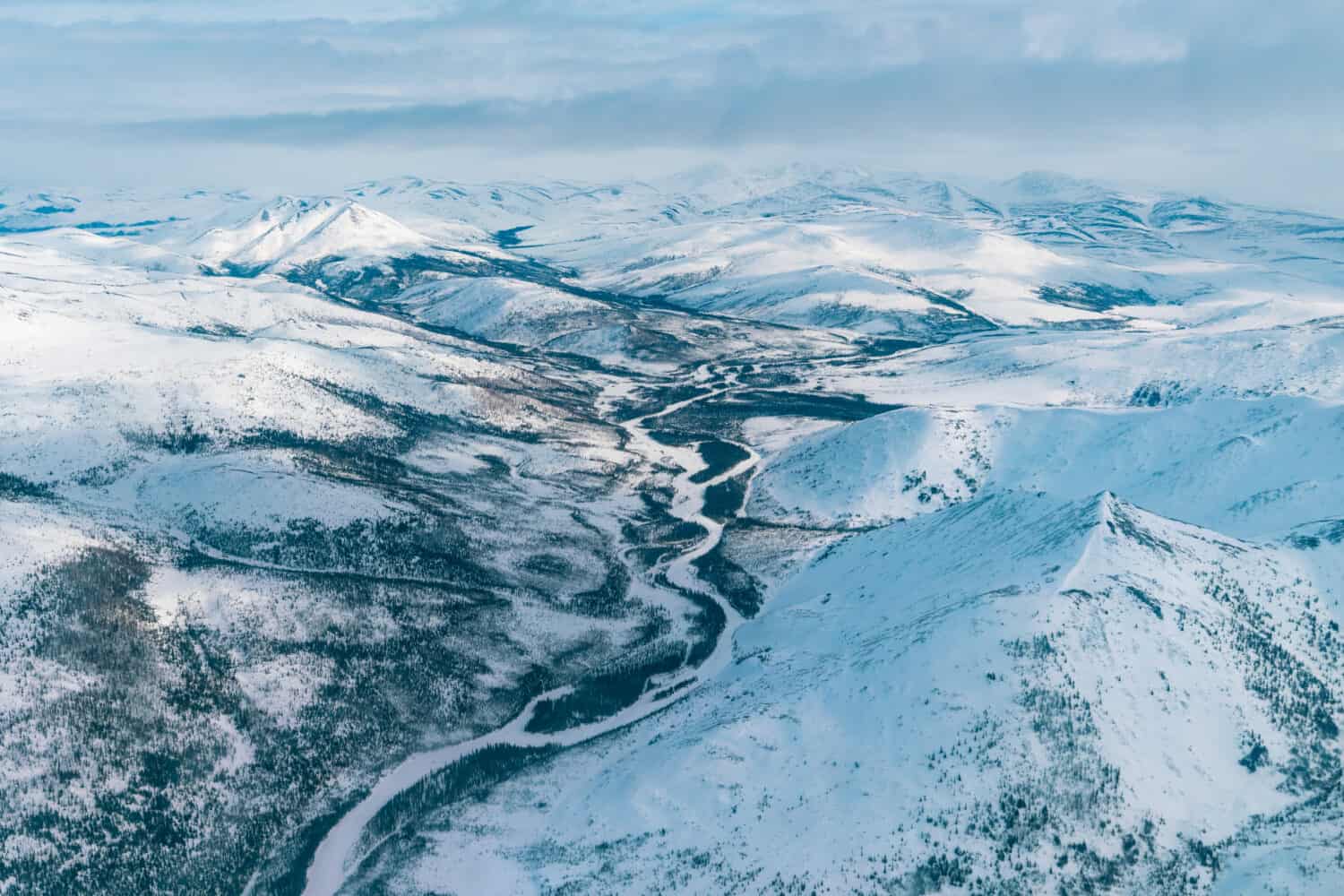
In the northeast of Alaska’s interior is the Arctic National Wildlife Refuge. The refuge runs from the Arctic Ocean through the Brooks Mountian Range deep into the Yukon River basin. It is the largest refuge in the U.S. on 19.64 million acres. The refuge has five regions: coastal plain tundra, coastal marine, alpine tundra, forest-tundra transition, and boreal forest. Adventurous visitors can come hike and explore the region and see animals like Dall sheep, caribou, grizzly, and polar bears, as well as a wide variety of birds and marine life. The refuge is a little out of the way, but the adventure is worth it.
Moose

Alaska wildlife is abundant, and moose roam freely throughout the state. There are four types of moose, and the Alaska-Yukon moose is the largest. A female can weigh 1,000 pounds, and a male can weigh close to 1,600 pounds. Every winter, the males shed their antlers and regrow them in Spring. Because of their size, moose can be more dangerous than they look.
The Alaska Department of Fish and Game suggests running for safety if a moose is aggressive and ready to attack. Their large heads and spindly legs make them awkward and top-heavy and unable to run fast or far. There have been cases of moose attacking and fatally stomping people who got too close to them. Moose are all over Alaska, not just in the backcountry or national parks. They have been seen in city parks, biking trails, and other places you wouldn’t expect to find. The females are especially dangerous in the early summer when they have calves.
Salmon
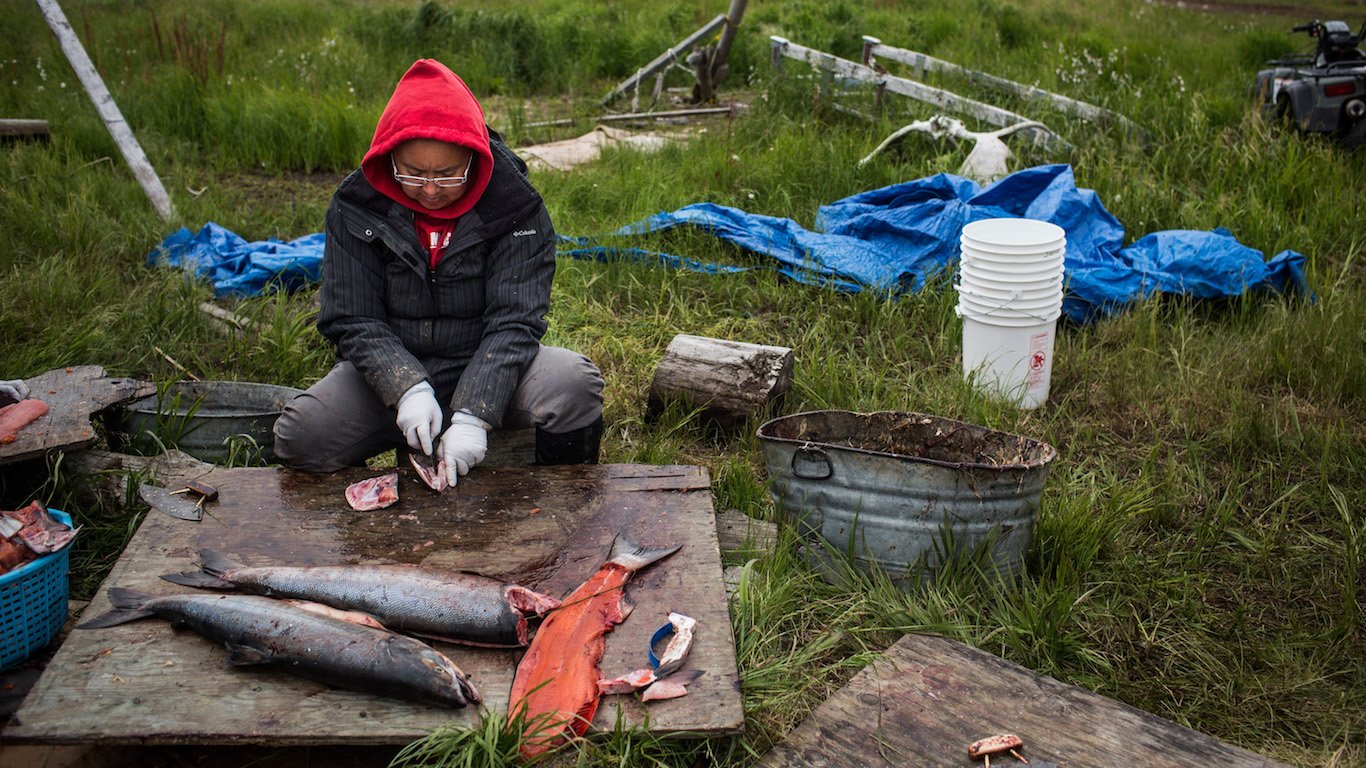
Alaska is known for world-class salmon fishing. The peak salmon fishing season runs from May to September, with the king salmon season from May through July, the silver salmon season from July through September, the red salmon season from July to August, and the pink salmon season in July and August. The best way to make the most of Alaska salmon fishing is to go with a guide; they can help with fishing licenses and lead visitors to the best spots to fish, whether on the Kenai River or out of Seward, Homer, or Whittier. There are lots of places to fish for salmon. Plus, many airlines allow passengers to fly home with fresh salmon.
Dark Winters
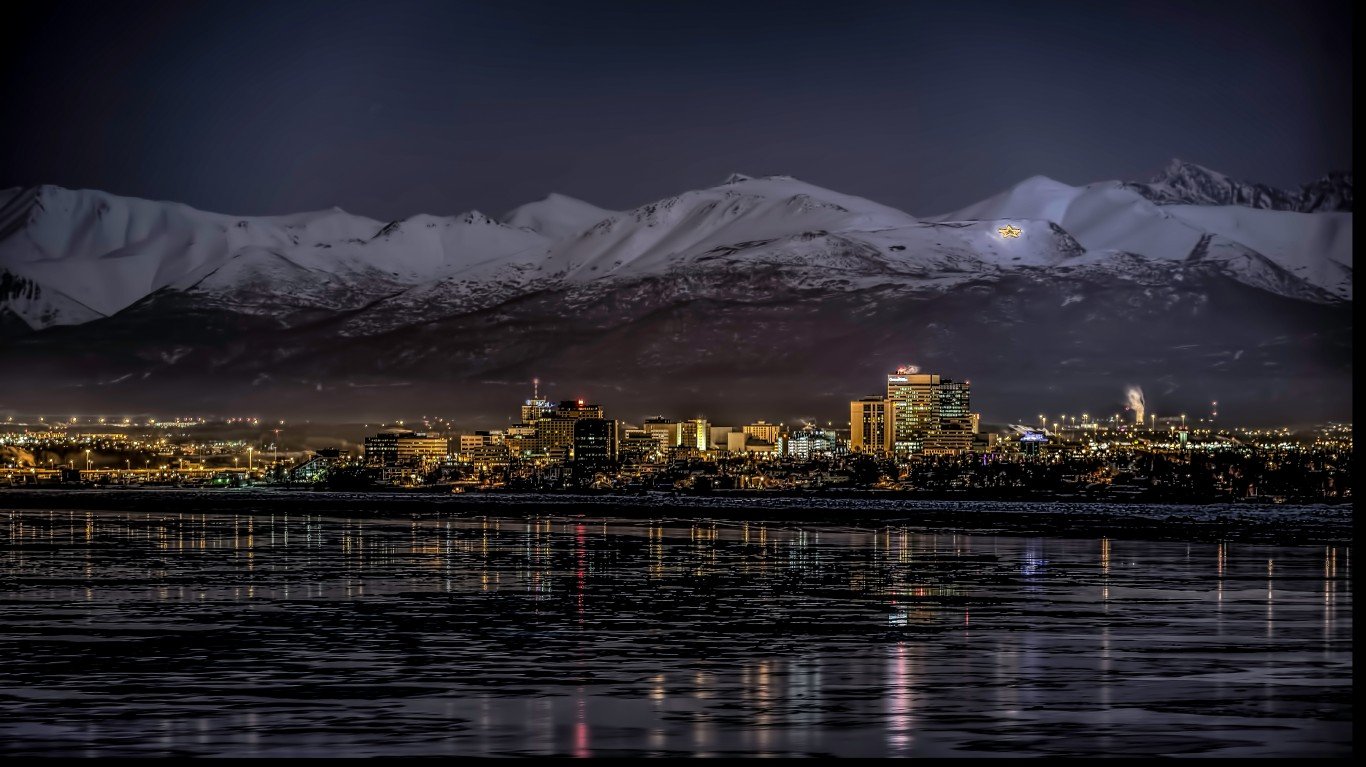
Winters are long and dark up in Alaska, where the sun may only peak out at 10 am and set at 2 pm. The locals take advantage of this quiet part of the year to spend time indoors with friends and family. The dark side of these long, dark winters is high levels of depression and alcoholism. But the spring and summer bring continuous light. There is some balance, but Alaska is extreme. Some people find the near-constant darkness of winter too much to bear and opt to only spend the warmer months in the state and the winters elsewhere.
Bears
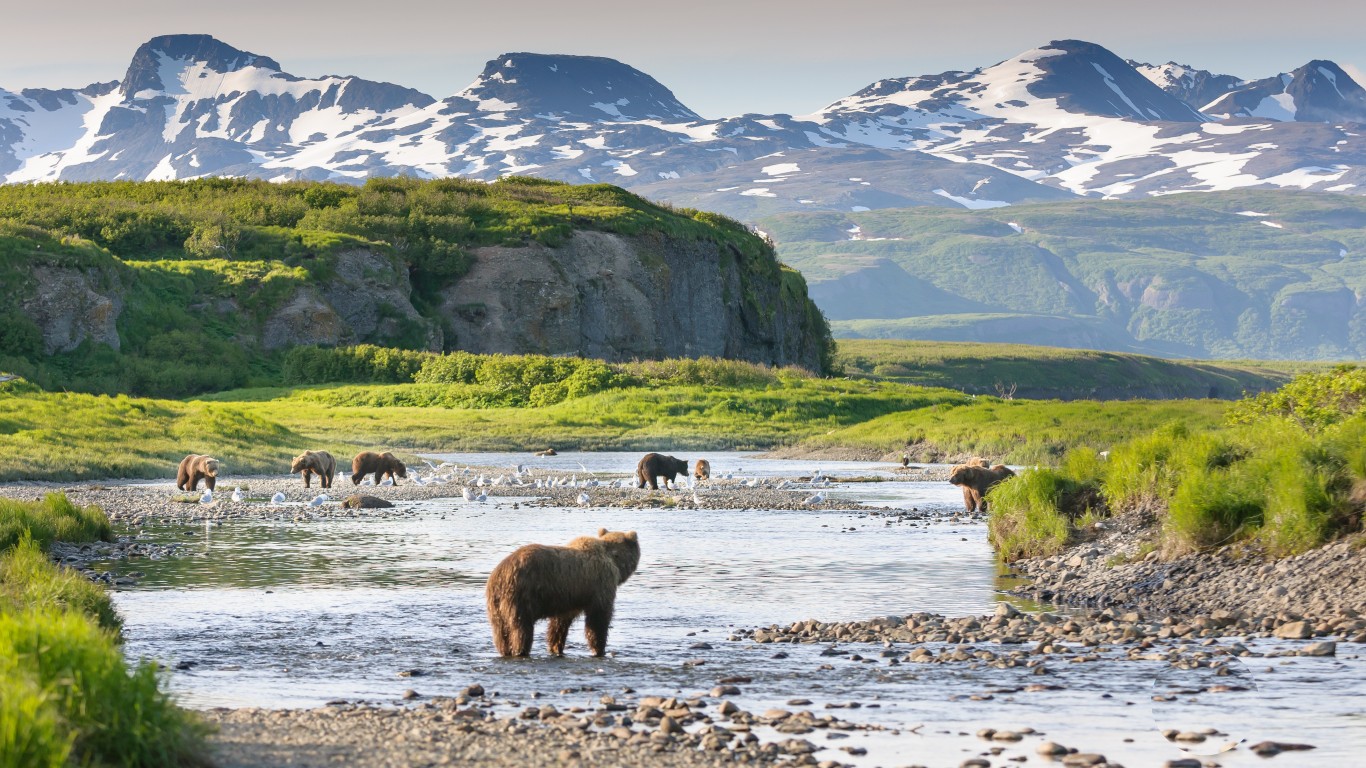
You won’t find any lions and tigers in Alaska, but you will find plenty of bears. Grizzlies, black, brown, and polar bears all make their home in Alaska. Visitors have the best chance of seeing brown bears at Lake Clark National Park and Preserve and Katmai National Park and Preserve, where the bears catch and feed on salmon.
Grizzly bears are generally in the interior and easy to see in Denali National Park and Kodiak. While polar bears are more elusive, they can be found in the Arctic parks of Bering Land Bridge National Preserve and Cape Krusenstern National Monument. The small towns of Kaktovick and Utqiagvik are known for polar bear sightings, and locals hunt them for sustenance. Sightseeing bears is never guaranteed, but the National Park Service runs bear webcams and has seasonal live streams available for bear watching.
The National Parks of Alaska advises hikers and campers to use bear-resistant containers to store food and hygiene products. Many campgrounds have built-in containers for campers to keep scented products away from bears. Before hikers can hit the backcountry in some parks, they must take bear training classes with information about how to stay safe in bear country.
Whales
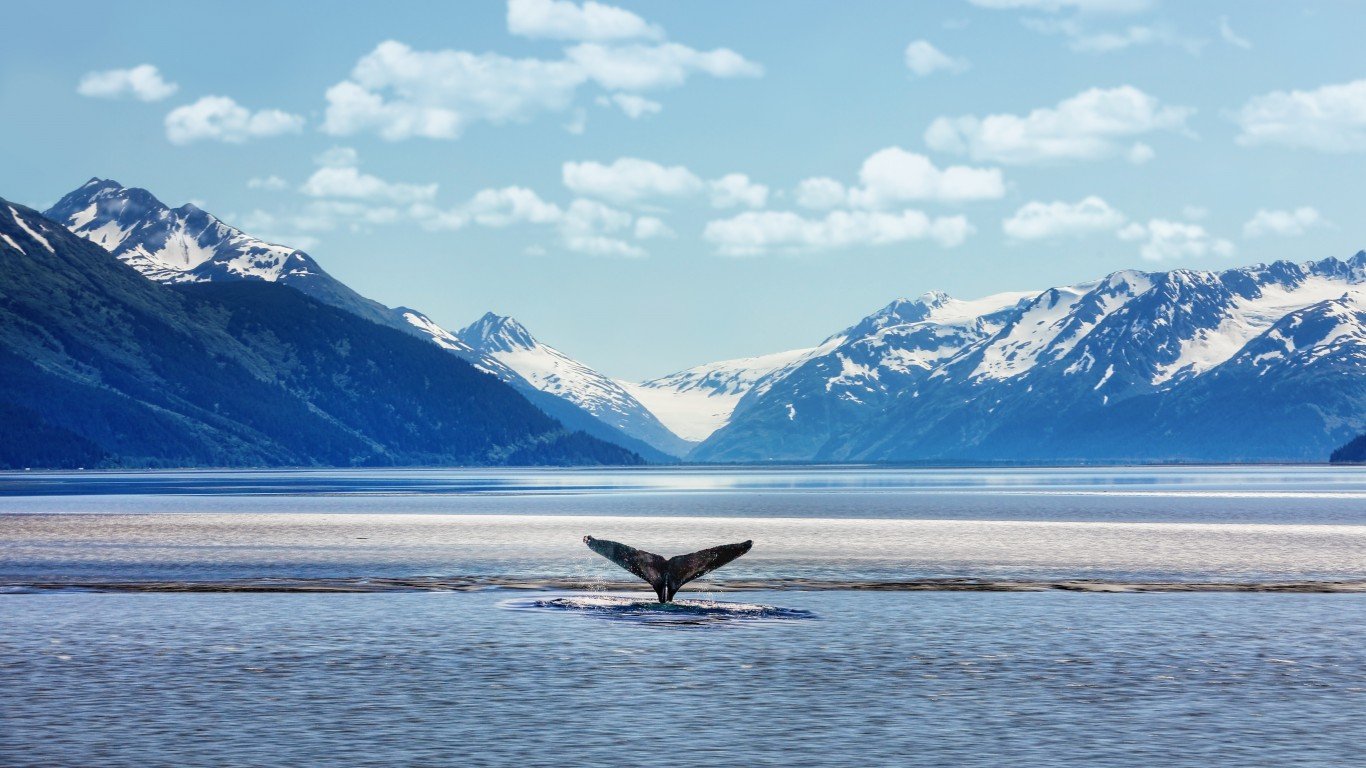
Whale watching season in Alaska is May through September when many species migrate up north for the summer and back down south in the winter. The best whale watching is in the Kenai Fjords National Parks region, where you can see orcas, gray whales, and humpback whales. Blue whales and minke whales are around but tend to be more challenging to find. There are many whale-watching boat tours to choose from to explore the area and watch these majestic marine mammals.
Sea Kayaking and Whitewater Rafting
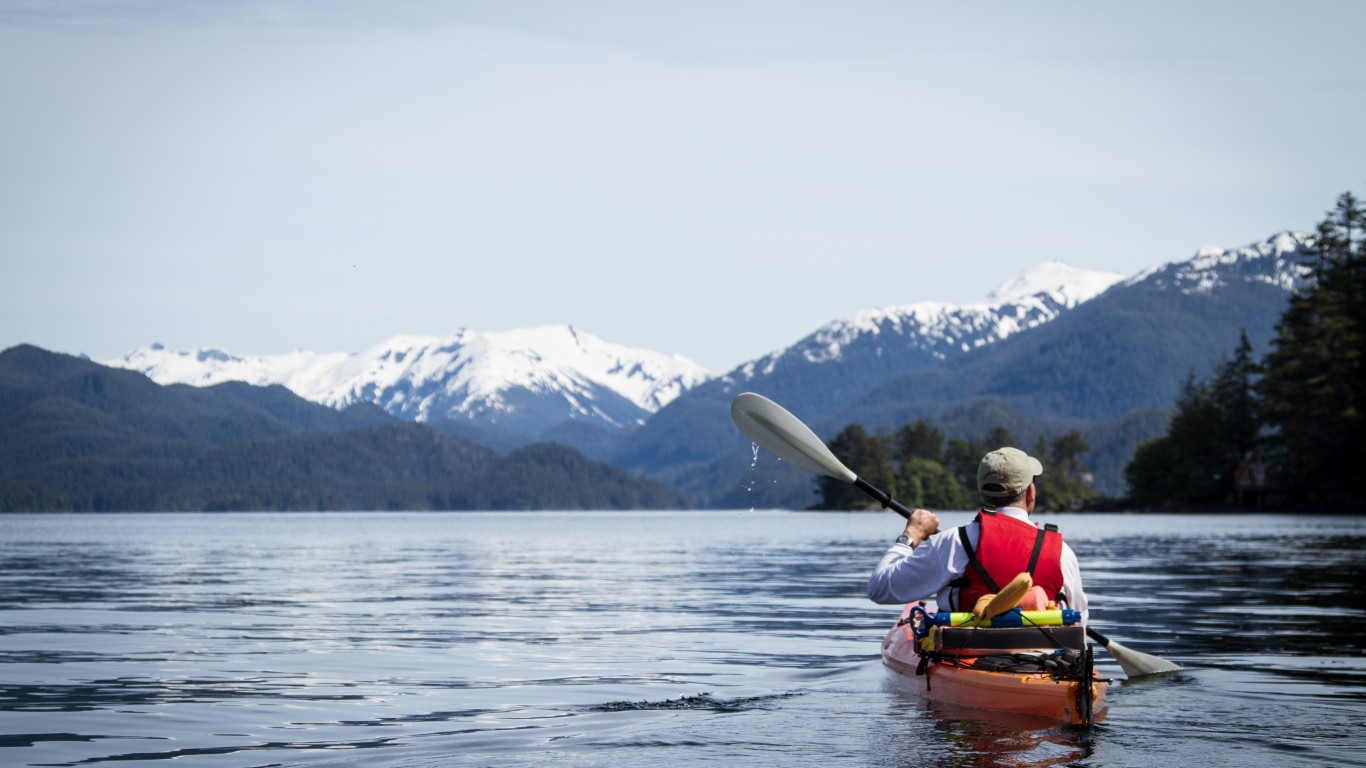
Alaska’s cold, pristine waters might not seem like a place for water sports, but sea kayaking and white water rafting are popular pastimes for locals and visitors. Sea kayakers can explore glaciers and get up close and personal with marine life like sea lions and whales. There are many guided tours and training for experienced and newbie sea kayakers to prepare for this experience.
White water rafting is also popular in the spring and summer on the many rivers that run through Alaska. The best way to experience this is with a tour that provides all of the necessary equipment and experienced guides for the safest whitewater rafting experience.
Anchorage
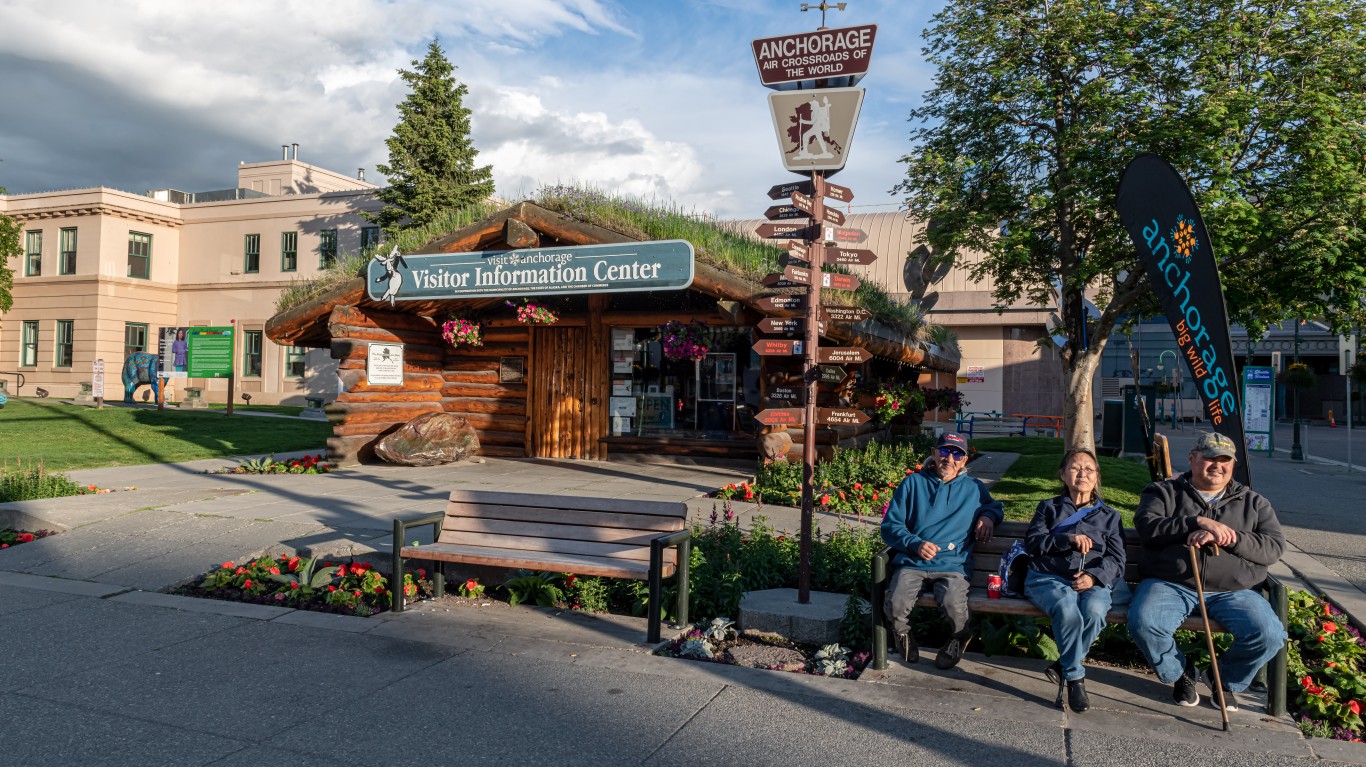
Anchorage is the capital of Alaska and the best place to start an Alaska adventure. It is the biggest and most populated city in Alaska, with all the things you expect from a city, like fine dining, museums, nightlife, and more. You can explore the Alaska Zoo or the Alaska Wildlife Conservation Center from Anchorage. Visitors can book a float plane, explore Cook Inlet, or hike through Chugach State Park.
The Alaska Native Heritage Center is a must-see when in Anchorage. It houses art and artifacts from indigenous populations throughout Alaska. The center opened its doors in 1999 and focuses on preserving indigenous language and culture. They offer workshops, internships, and community classes to learn about traditional arts and storytelling. Their mission focuses on education and collaboration to preserve the rich cultural heritage of the Alaska Native People.
Alaska Native Culture

Alaskan indigenous groups have inhabited this part of the world for thousands of years. Archaeologists are learning more and more about the indigenous peoples of the past and their historical importance. Today, indigenous people make up 15% of the population, with twenty different cultures and 300 dialects. The Aleuts, Inuits, and First Nations are an important part of the state’s story, and their storytelling, ceremonies, art, and culture must be preserved.
Seafood Canneries
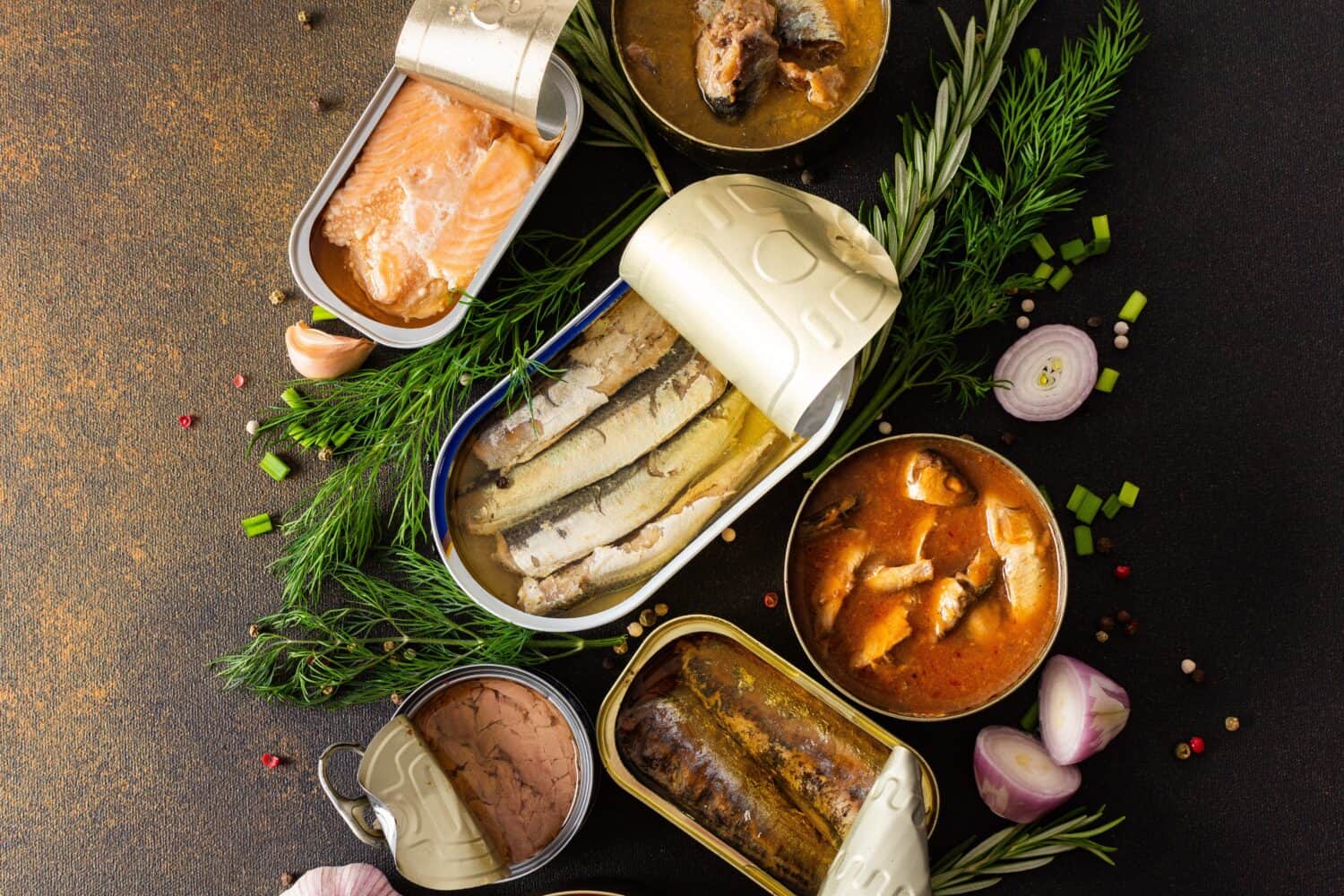
Chances are you have eaten seafood canned in Alaska. The fishing industry is the third largest industry in Alaska after oil and tourism. Processing and canning seafood is big business, and the seafood canneries in the state are their own little communities. In the summer season, workers come from all over to spend their summers working in the canneries. The cannery communities have everything the workers need to live, including a mess hall, store, laundry service, post office, hospitals, and more.
The seafood canneries bring people from all over, from foreign migrant workers to college students to locals, to work long hours in canning salmon, halibut, shrimp, oysters, clams, crab, and cod. The self-sustaining cannery communities are only open during the fishing season, and many workers move from cannery to cannery for each specific seafood. Some workers go from canneries to fishing boats and make a full-time career from seasonal work. The canneries are an integral part of the local Alaska economy.
The Gold Rush
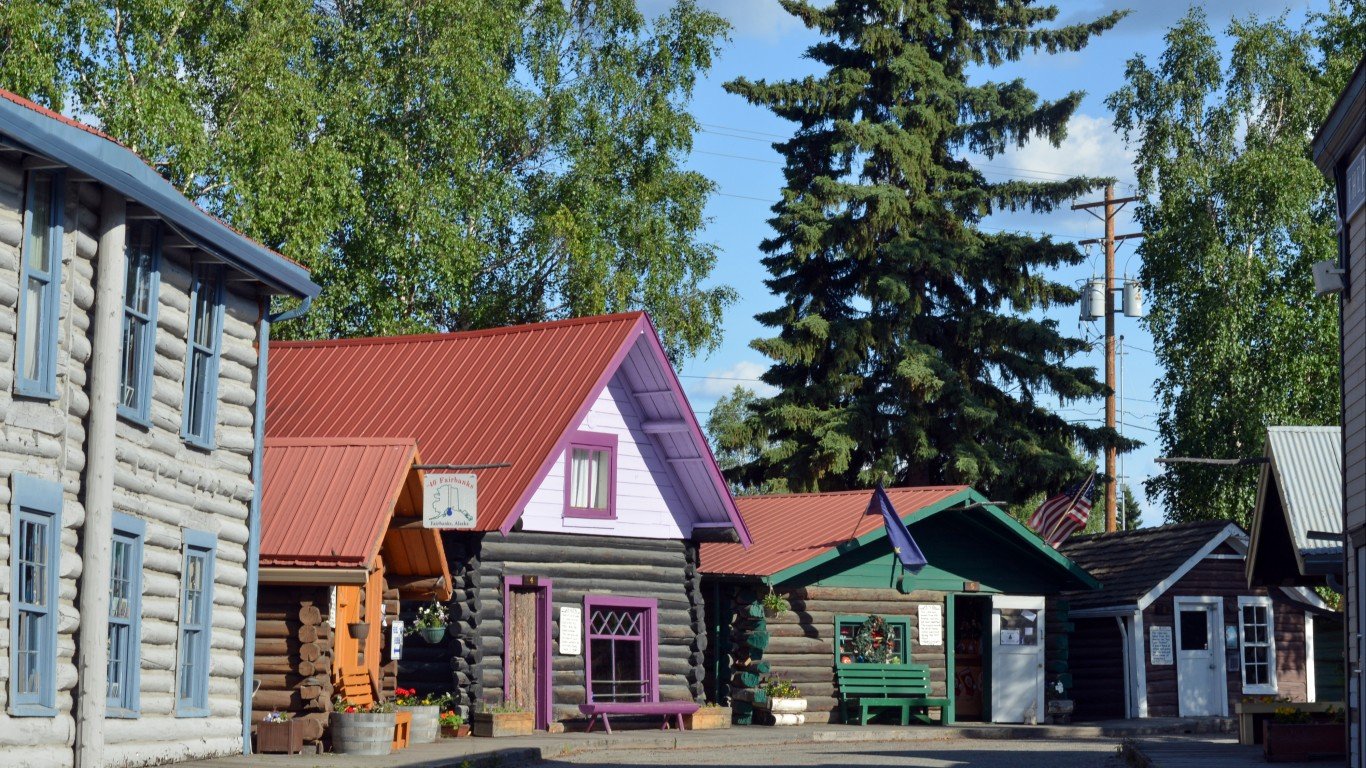
In 1898, the Klondike Gold Rush swept through the North, and prospectors seeking riches flocked to Alaska and the Yukon. However, the gold boom was greatly exaggerated, and many returned home empty-handed. The folks who did make money didn’t make it from gold but from the people looking for gold. The small towns and businesses supporting them were much more lucrative than gold.
The following year, a gold miner found gold in Nome, Alaska, and the miners and prospectors made their way there. Alaska is still known for the gold rush that helped build infrastructure and create communities. Several places let visitors relive the gold rush and pan for gold, giving guests a hands-on approach to learning about the past.
Alaska Cruises
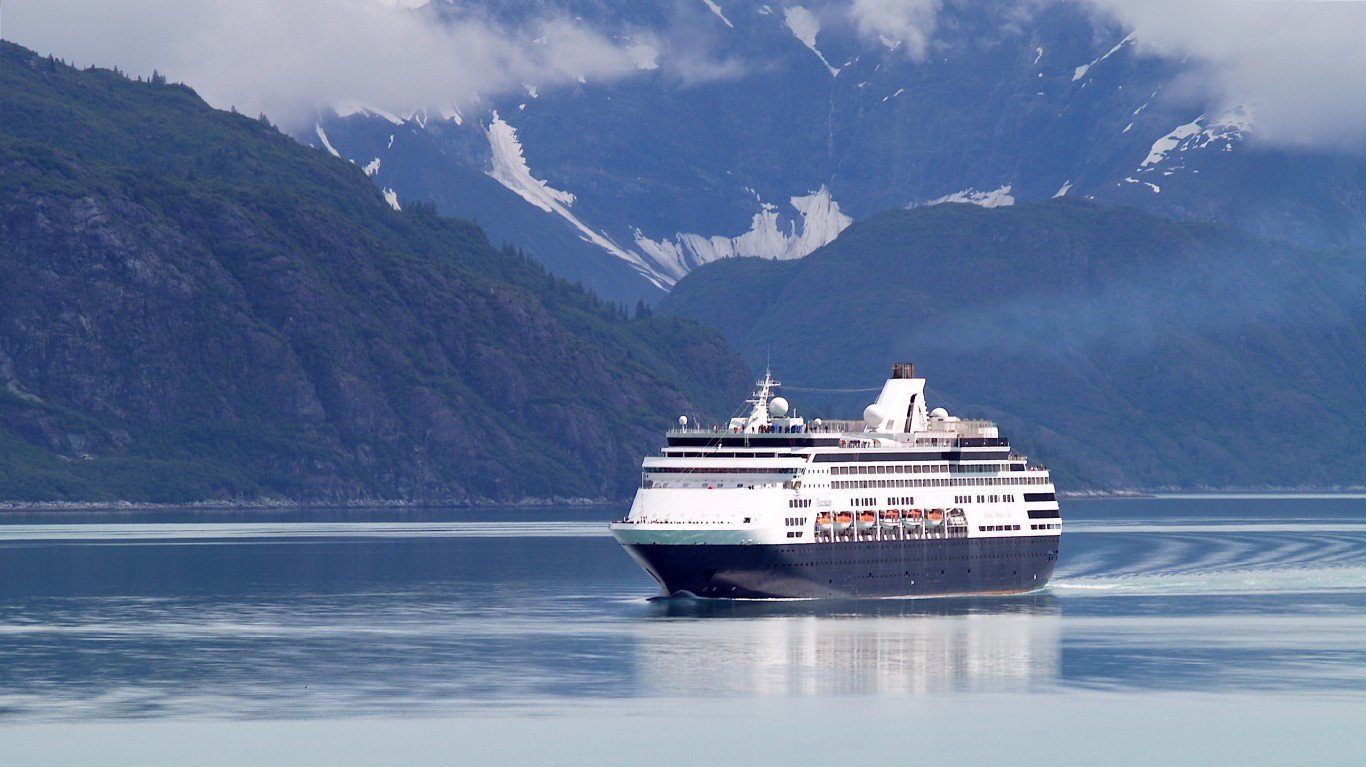
Taking a cruise through Alaskan waterways is one the best ways to see the marine life, fjords, and islands that make the state so unique. Cruise companies like Holland America, Princess, Royal Caribbean, and Carnival Cruises have multi-day packages along the southeast.
Aside from whale watching, the cruise lines have many excursions like Saxman Totem Park in Ketchikan, seaplane rides from Juneau, panning for gold in Skagway, or spending time in Sitka at the Silver Bay’s Fortress of the Bear rescue facility. Some cruises include a railroad trip up through Denali National Park. Visitors fly out of Fairbanks, so they get the cruise and a chance to get a glimpse of the beauty of interior Alaska.
(To learn more about a different U.S. state, check out 20 Things Arkansas Is Known For.)
